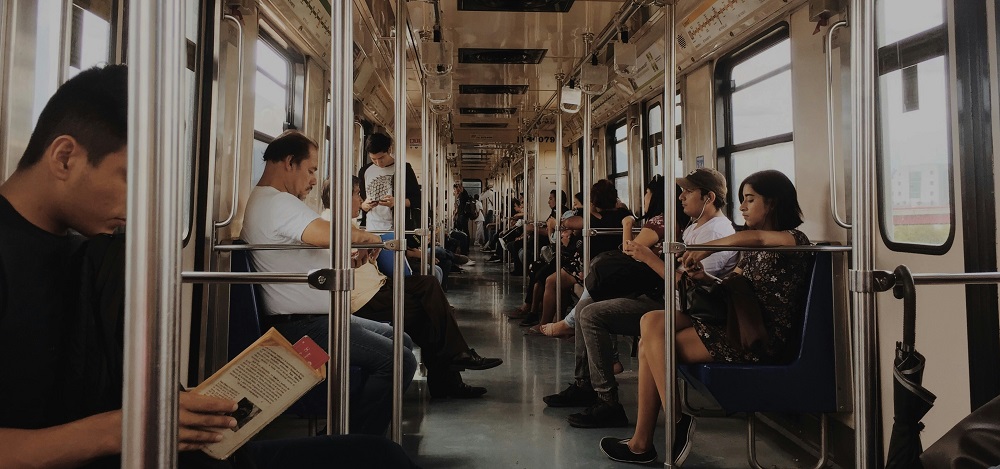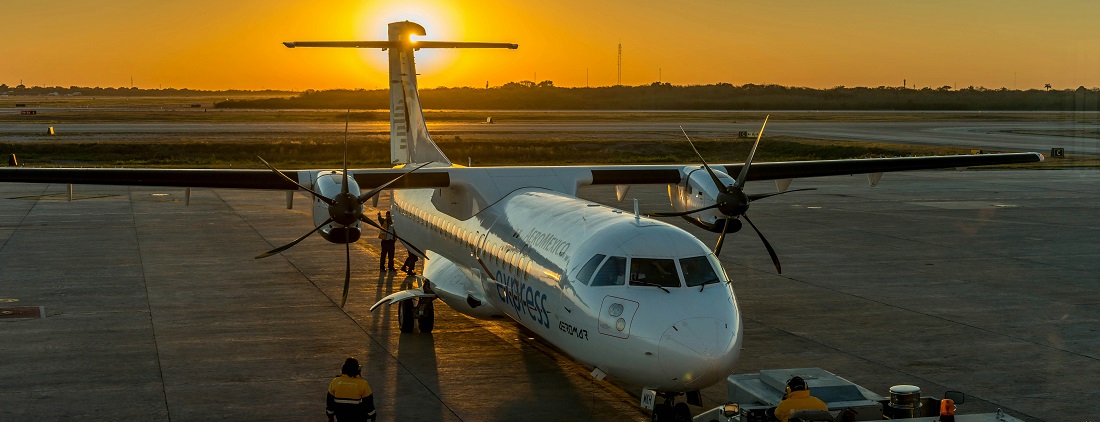- Download our Moving to Mexico Guide (PDF)
Taking transport and driving in Mexico can be an exhilarating experience, given that some of the country's transport options are, shall we say, not for the faint of heart. Mexico has a relatively well-maintained road network, consisting mainly of toll roads, and a relatively efficient public transport system within and between its major cities.
Whatever the mode of transport, we recommend that expats learn at least some basic Spanish and familiarise themselves with the local customs – it’d make a world of a difference when getting around in Mexico.
Public transport in Mexico

Mexico’s public transport system is extensive, affordable and efficient, and a good knowledge of Spanish is helpful when navigating the system, especially during peak hours.
Buses
An extensive bus network offers an efficient and affordable way of getting around Mexico. There are two classes available on long-distance bus routes: first- and second-class. First-class buses have comfortable reclining seats as well as toilets and movies onboard. Many long-distance routes run non-stop, and get travellers to their destinations quickly. It's recommended that passengers buy tickets for first-class buses in advance to ensure they get a seat, otherwise, it's easy to get bus tickets at the station.
There are local buses and microbuses (micros) in most cities and towns, such as Mexico City’s metrobús and its green and white micros. These are cheap and tickets can be bought on board, but they can be uncomfortable as passenger limits are hardly regulated.
Previously, Mexico's bus drivers were known for poor safety, but the Mexican government has introduced warning lights and buzzers to indicate to drivers when they are going over the speed limit. There is also more frequent maintenance being done on the buses and random alcohol and drug tests on drivers.
Metro
Mexico City, Monterrey and Guadalajara all have metro or light rail systems. Mexico City’s metro system is joined by el tren ligero, the light rail system, reaching the southern suburbs of the city. The Monterrey Metro, better known as Metrorrey, is much smaller than Mexico City's metro and only has three lines.
Expats should be aware that the metro is a prime operating spot for pickpockets and should look after their valuables. Wealthier citizens tend not to use the metro, and tourists should avoid it or at least be vigilant during peak hours.
Trains
The regional passenger train system in Mexico is close to non-existent, and though development plans have been projected, there has been little progress. That said, tourists and travellers can still see a bit of the country by train. Expats can explore the Copper Canyon area by taking the Chihuahua Pacific Railway, also known as El Chepe, or travel between Guadalajara and Tequila by taking the Tequila Express.
Useful links
- Learn more about Mexico City's metro system.
- For more on bus tickets and schedules across Mexico, check out Clickbus.
Taxis in Mexico
Expats can travel around Mexico’s cities by taxis relatively cheaply. Taxis either use meters or charge by zones, with prices varying between different zones. Expats are encouraged to agree on a price with the driver before beginning the journey, even if the meter is working, to avoid being overcharged.
For safety reasons, new arrivals to large cities and expats who don’t speak Spanish should phone a taxi company. Expats can also use an app such as Uber or Cabify, or get one at a taxi rank (sitio) rather than hail one off the street.
Colectivos
Latin America is home to the colectivo. Colectivos vary between different countries but are essentially a shared taxi, be it a car, minivan or a pick-up truck. Riders will have to wait until the vehicle fills up before they get going.
Mototaxis
Although the safety of these three-wheeled vehicles is questionable, mototaxis and tuk-tuks found around large cities are a cheap and exciting way to get around.
Useful links
Driving in Mexico
Expats driving in Mexico should do so cautiously and make sure to drive slightly under the speed limit. It is important to always follow the rules of the road, even if the other cars don’t seem to be.
It's best to stick to toll roads if one has never driven in Mexico before or is unable to speak Spanish. Expats should make sure to have Mexican pesos in their vehicles, as US dollars are not accepted at tolls.
Expats should keep an eye out for particularly elevated speed bumps and unexpected potholes, which could damage their car if they do not slow down. Speed bumps are found on major toll roads as well as minor roads. Livestock on the road is also a problem in Mexico; expats should be aware of this and drive cautiously. This is the primary reason why driving at night in Mexico is not advised and can be extremely hazardous.
Drivers in Mexico should always beware of police roadblocks, which function to stem the flow of drugs from Mexico into the USA. Police don’t usually bother foreigners too much, but being wary of these checkpoints is nevertheless recommended. Expats can expect checkpoints along most major and some minor roads. Police will most likely search the car and ask drivers to produce their driving licences and insurance information.
Car insurance
Car insurance in Mexico is required by law, and it must be administered by local insurance companies licensed in Mexico. It is affordable and expats can buy Mexican car insurance online or in border towns in the USA. Those staying longer than 16 days may find it cheaper to pay for a six-month insurance plan. Insurance is crucial when driving in Mexico. Should a foreigner be in an accident, they could be sent to jail and would not be able to leave Mexico until the damage is paid for.
Roadside assistance
Mexico has a roadside assistance service called the Angeles Verdes (Green Angels) who drive green trucks and can fix anything from a flat tyre to a leaking radiator. Their services are free, but drivers must pay for parts and petrol, if necessary, and tipping is highly valued.
The Angeles Verdes can be reached by dialling 078.
Driving licences
Expats can use their home country’s driving licence in Mexico, but they are advised to get an International Driving Permit so that it can be translated into Spanish. New arrivals need to apply for this within six months of arriving in Mexico but can often organise this from their home country. Expats must carry both their International Driving Permit and their home country’s driving licence with them when driving in Mexico.
New arrivals who choose to purchase a vehicle in Mexico must secure a local driving licence within a year of registering their vehicle. This involves submitting originals and copies of an expat's immigration card or proof of legal residence in Mexico, a valid passport and proof of address at the Transport Secretary's Office (Secretaría de Movilidad office).
Expats will need a health certificate and to take a written test in either English or Spanish. Once newcomers pass the written test, they must take the practical driving test, which is conducted in Spanish. Mexican driving licences are valid for between two and five years.
Driving restrictions in cities
Mexico City and other urban areas have limitations on the number of cars allowed to enter over certain times. Older cars with certain number plates and vehicles not registered in Mexico are restricted from entering Mexico City for specific hours in the mornings. The aim is to reduce pollution, but expats should be aware of this and check on these matters when they are renting or buying a car.
Useful links
- For more on the Green Angels roadside assistance, visit the Mexican government's website.
- Learn more about securing a Mexican driving licence on the Transport Secretary's website.
Air travel in Mexico

There are more than 50 domestic airports in Mexico and, since it is such a large country, travelling by plane is often the best way to cover long distances. Mexico has a range of low-cost domestic airlines to choose from, including Aeroméxico, Interjet and Volaris, affording travel options to suit every budget.
Sea travel in Mexico
Expats and tourists can also travel by boat, ferry or ship. Cruises are popular around the Pacific coast and the Mexican Caribbean, given the warm, tropical climate. There are also passenger and vehicle ferries sailing between Baja California, islands off the coast, and various coastal locations along the Mexican mainland.
Walking in Mexico
Walking short distances when exploring towns and cities is generally one of the best ways to travel and get familiar with the surroundings. In Mexico, though, pedestrians must be wary. The terrain and standard of pavements aren’t great and could prove a challenge for some, while it’s important to stay vigilant when walking close to roads as vehicles can drive recklessly, ignoring road signs.
Cycling in Mexico
Another quick and easy way to get around is by bike. Expats can rent bikes in major cities from services such as ECOBICI, Mexico City’s bike-sharing programme, and follow different cycle paths and lanes. This seems like a fantastic opportunity even for children, but cyclists should be aware that the bicycle lanes are not well maintained, and wearing a helmet and staying vigilant for car and foot traffic are essential.
Otherwise, Mexico’s diverse and unique natural landscape affords extensive opportunities for mountain biking and exploring new areas. Of course, there are necessary precautions to take, ensuring the level of fitness and prepping sufficiently for such expeditions.
Useful links
- Visit ECOBICI's website to find out more about renting a bicycle in Mexico City.
- For mountain bike rentals and bicycle tours, see Bicicletas Pedro Martinez and Bike Mexico.
What do expats say about public transport in Mexico?
"We only have buses in Puerto Vallarta, and they are pretty good. But there is no AC, so when it’s sweltering here and the buses are packed, be prepared to stand and sweat. And if you are a germaphobe, stay clear because it’s not just your sweat that you’ll be soaked in." Check out our interview with American expat Kirsten to learn more about living in Mexico.
"The taxi drivers were all very chatty and keen to take a person sightseeing, (heed my advice, don’t) the buses were crowded, but dirt cheap, often you could even ride for free." Get travel tips for Mexico in our interview with Rudi, a South African expat who stayed in Cabo San Lucas.
Further reading
►For more information on expat life, have a look at our Cost of Living in Mexico page
►Read more about Shipping and Removals in Mexico
Photo credits: Metro in Guadalupe by Mariel Rodriguez; White passenger plane in Mérida, Mexico by Eddie Bugajewsk. Both sourced from Unsplash.
Are you an expat living in Mexico?
Expat Arrivals is looking for locals to contribute to this guide, and answer forum questions from others planning their move to Mexico. Please contact us if you'd like to contribute.
Expat Health Insurance
Cigna Global Health Insurance.
Medical insurance specifically designed for expats. With Cigna, you won't have to rely on foreign public health care systems, which may not meet your needs. Cigna allows you to speak to a doctor on demand, for consultations or instant advice, wherever you are in the world. They also offer full cancer care across all levels of cover, and settle the cost of treatments directly with the provider.
Moving Internationally?
International Movers. Get Quotes. Compare Prices.
Sirelo has a network of more than 500 international removal companies that can move your furniture and possessions to your new home. By filling in a form, you’ll get up to 5 quotes from recommended movers. This service is free of charge and will help you select an international moving company that suits your needs and budget.
Get your free no-obligation quotes from select removal companies now!


